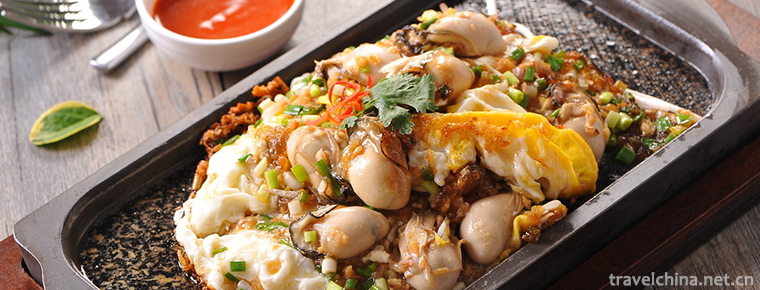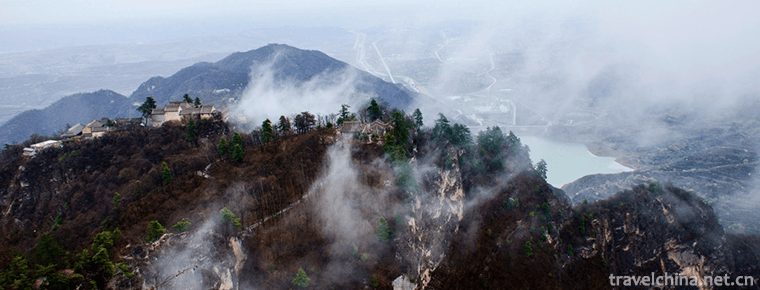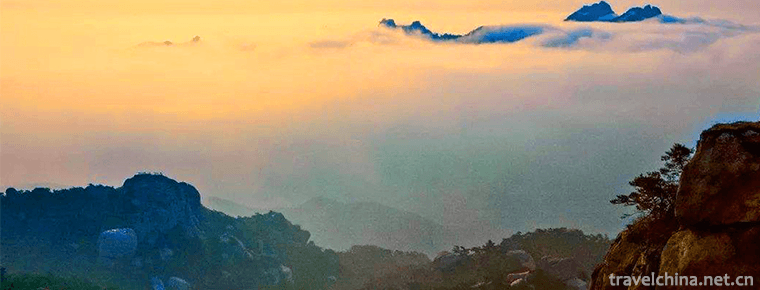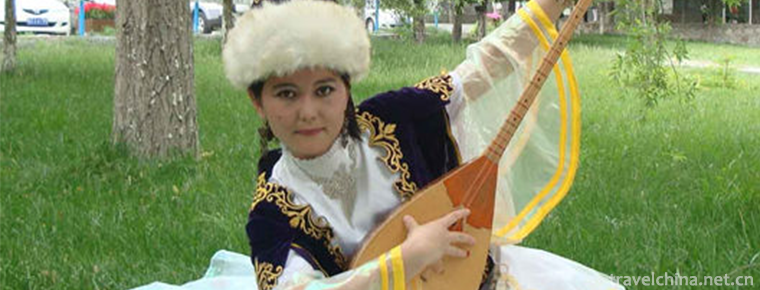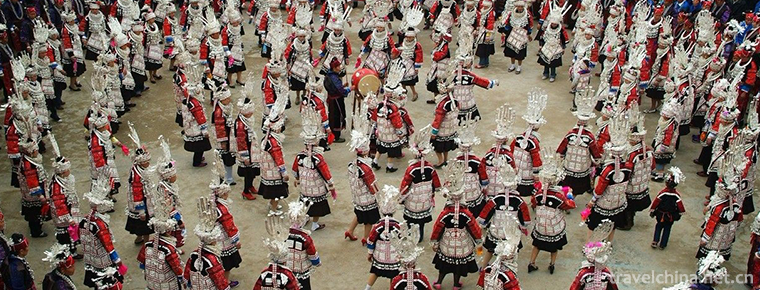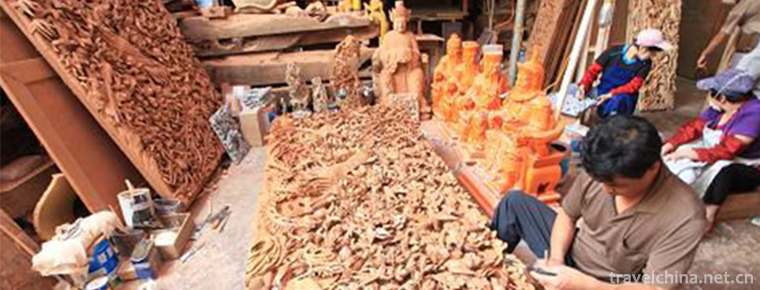Tianshi cave
Tianshi cave
Tianshi cave, also known as Chang Taoist temple, is the most important Taoist temple in Qingcheng Mountain. In 1983, it was designated as the national key Taoist temple by the State Council. In addition, there are four palaces in Qingcheng Mountain: Jianfu palace, Yuanming palace, Yuqing palace and Shangqing palace.
It is said that at the end of the Eastern Han Dynasty, Zhang Daoling, the founder of Tianshi Taoism, practiced preaching among the cliffs of the third Hunyuan peak on Qingcheng Mountain in Guanxian County, Sichuan Province, commonly known as Tianshi cave. The original temple was destroyed early and rebuilt in Qing Dynasty. There are three kinds of halls, namely Sanqing hall, Sanhuang hall and Huangdi temple.
Main attractions
Sanqing Hall
Sanqing hall is the main hall, built in 1923, is a double eaves Xieshan Pavilion style building. In front of the hall, there are 9 stone steps, 6 large stone columns arranged on the front eaves, and 5 rooms in the hall. In the middle of the hall, there is a plaque on the imperial script of Emperor Kangxi of the Qing Dynasty: "Dan Tai Bi Dong". There are several couplets hanging in front of the hall, one of which reads: "one's life is two, two is three, and three is all things; earth follows heaven, heaven follows Tao, and Tao follows nature.". This couplet is not only the true transmission of Laozi's Taoist thought, but also implies the profound implication of "one Qi turns into three Qing". The three supreme deities worshipped in Sanqing hall are the Yuanshi Tianzun in Yuqing fairyland, Lingbao Tianzun in Shangqing fairyland and moral Tianzun in Taiqing fairyland. Taoism believes that these three gods are the creators of all things in the world.
Sanhuang Hall
The other main hall of Tianshi cave is the Sanhuang hall. There are 1 stone statues of Fuxi, Shennong and Huangdi, about 1 meter high. They were carved in the 11th year of Kaiyuan of Tang Dynasty (723 AD), all of which were seated statues. Taoism takes Huangdi and Laozi as their ancestors. It is said that the Yellow Emperor learned Taoism from the immortal Ning Fengzi in Qingcheng Mountain. Ning Fengzi also helped him defeat Chiyou. Later, the Yellow Emperor achieved great achievements and became an immortal by riding the dragon. Ning Fengzi was named the main immortal of Qingcheng Mountain. Therefore, in Qingcheng Mountain, not only the three emperor temple was dedicated to the Yellow Emperor, but also a yellow emperor temple was built for him.
Huangdi Temple
The ancestral hall of the Yellow Emperor was built in Sui Dynasty, and it was one of the earliest temples of Tianshi cave. Therefore, it was once called Tianshi cave in Song Dynasty. On the forehead of the main gate, there are four big words of "ancient Yellow Emperor Temple" written by Mr. Youren.
There is a hole on the left side of Huangdi temple. It is said that it is the place where Zhang Daoling practiced. This is what people call Tianshi cave. At the top of the cave, there is a niche, which enshrines the statue of Tianshi Zhang carved in the Sui Dynasty. His face has three eyes and his manner is dignified. The left hand palm extends straight out, and holds the treasure of Tianshi Zhenshan: "the seal of Yangping governing the capital". Outside the cave, there are also statues of Zhang Daoling's 30 generations grandson and Zhang Jixian, the emperor of Xujing in Song Dynasty.
Historical legend
The scenery near Tianshi cave is beautiful. There are three island stones in the East. There are two cracks on the huge stone, so it is named. According to folklore, when Tianshi Zhang was subduing demons, he saw the stone blocking the road, so he took out his sword and split it into three pieces. The stone was engraved with the word "subdue the devil". The spring water circulates around the stone and covers the sky with thick shade. Along the stone steps cut by the stone gap, you can go down to the side of Haitang river. The stream is deep, the wall is steep, and the vines are hanging down. It is very quiet. There is a legend that there are more than sixty meters deep in the cave when the master throws a magic pen.
Traffic information
Take bus No.101 and 102 to Dujiangyan, and walk to the scenic spot.

-
Oyster omelet
Oyster fry is a common home dish, which originated in Quanzhou, Fujian Province, and is one of the classic traditional snacks in southern Fujian, Taiwan, Chaoshan and other regions..
Views: 260 Time 2018-11-02 -
Kongtong Mountain Scenic Spot
Kongtongshan Scenic Area is located 12 kilometers west of Pingliang City, Gansu Province. It overlooks Xi'an in the east, Lanzhou in the west, Baoji in the South and Yinchuan in the north.
Views: 209 Time 2018-12-12 -
Wulian Mountain Scenic Area
Wulian Mountain Scenic Area covers a total area of 68 square kilometers and is a national AAAA-level tourist area. It is composed of Wulian Mountain and Jiuxian Mountain.
Views: 153 Time 2018-12-22 -
Weihai Tianmu Hot Spring Resort
Tianmu Hot Spring Resort Project invested 600 million yuan by Zhuhai Tianmu Group. A total of 35,000 square meters were opened in September 2008..
Views: 80 Time 2019-02-22 -
Tibetan Gugu Encouragement
Tibetan God inspiration has a long history. As for its origin, there is a legend that one or two hundred years ago, a "Gawa Hubo" (i.e. a local official) in Ningba village danced in the mans.
Views: 390 Time 2019-04-05 -
Kazakhstan 62 Kwohner
Kazakhstan 62 Kwohner 62 Kwohner is Kazakh folk classical music, which means "62 suites". It is a comprehensive art mainly composed of instrumental music, accompanied by folk songs, dances,.
Views: 207 Time 2019-05-02 -
Jingzhou Miao Geku
The Miao people's song (tgong) has been declared as the first batch of national folk intangible cultural heritage and one of the two "national treasures" of Huaihua City..
Views: 133 Time 2019-05-08 -
Lv Jiahe Folk Song
Lvjiahe Folk Song is a kind of folk song which is popular in Lvjiahe Village, Guanshan Town, Danjiangkou City, Hubei Province. Located in Wudang Mountain Scenic Area, the village retains a large numbe.
Views: 198 Time 2019-05-15 -
Miao Sister Festival
Miao Sister Festival, also known as "Sister Rice Festival", is a traditional festival of Miao people in Laotun and Shidong areas of Taijiang County, Guizhou Province. It is held from March 1.
Views: 117 Time 2019-06-05 -
Wood carving
Wood sculpture is a kind of sculpture, which is often called "folk craft" in our country. Wood carving can be divided into three categories: solid round carving, root carving and relief carv.
Views: 124 Time 2019-06-06 -
Anhui University Of Science & Technology(aust)
Anhui University Of Science And Technology is located in Anhui province. Huainan City Yes. Anhui higher education revitalization program Local characteristics High level University Construction, proje.
Views: 550 Time 2019-10-10 -
Chengdu Yongling Museum
The Royal Museum of Wang Jian, located at No.10 Yongling Road, Jinniu District, Chengdu, covers a total area of 54000 square meters, and is composed of three parts: cultural relics protection area, comprehensive museum and garden protection area..
Views: 122 Time 2020-10-18
